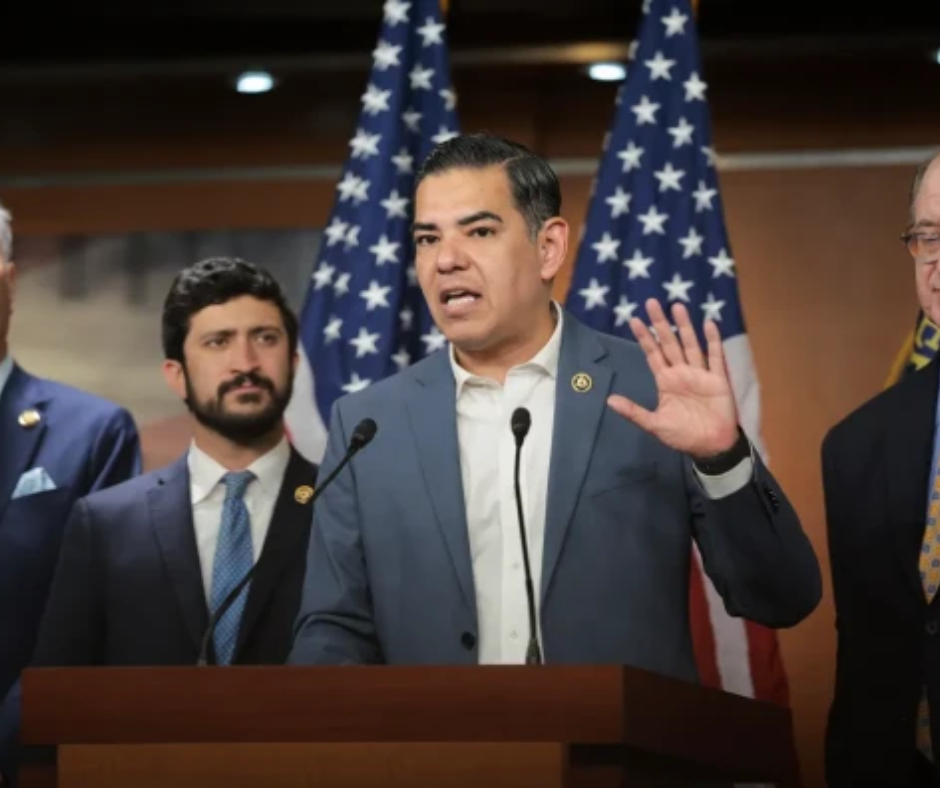
Recently, a bold proposal by South Dakota Governor Kristi Noem has sparked widespread debate and significant concern across the United States. Amid an increasing number of natural disasters and emergency scenarios nationwide, Governor Noem has proposed the controversial idea of eliminating the Federal Emergency Management Agency (FEMA), a cornerstone of disaster response and relief in America.
The proposal surfaced as FEMA and its emergency services have become more essential than ever. Climate change has intensified extreme weather events, resulting in increasingly severe storms, wildfires, floods, and hurricanes. Just recently, emergency declarations were issued by FEMA for multiple disasters nationwide, including severe wildfires ravaging the Carolinas. In this context, Governor Noem’s suggestion to dismantle the agency has sparked both criticism and fervent discussion regarding its feasibility and potential consequences.
Understanding Kristi Noem’s FEMA Proposal
Governor Kristi Noem has consistently positioned herself as a strong advocate for reduced federal intervention and increased state autonomy. Her proposal to eliminate FEMA reflects this ideological stance, asserting that disaster management should primarily fall under state control rather than federal oversight. According to Noem, decentralizing disaster response could lead to greater efficiency, quicker reaction times, and better utilization of local resources and knowledge.

In presenting her controversial idea, Governor Noem argued that states are better positioned to understand their unique emergency management needs. She pointed out the bureaucratic inefficiencies and budgetary challenges that FEMA has faced historically, suggesting these issues could be significantly mitigated if states directly controlled disaster relief resources and procedures.
However, given the recent surge in natural disasters across the country and FEMA’s crucial role in coordinating multi-state responses, many critics question the practicality of Governor Noem’s proposal. Eliminating a centralized response system at a time when disasters have intensified appears risky and potentially detrimental, particularly to smaller states with fewer resources.
The Critical Role of FEMA in Recent Disasters
To truly assess the viability and potential impact of Governor Kristi Noem‘s proposal, it is essential to examine the critical roles FEMA has played in recent years. In the face of intensifying climate-related disasters, the agency has consistently demonstrated its importance. For example, in recent weeks, severe wildfires in the Carolinas have tested the nation’s disaster response capability. FEMA swiftly stepped in, mobilizing federal resources to assist affected communities in evacuating residents, setting up temporary shelters, and providing emergency funds and critical infrastructure repair.
Beyond the immediate response, FEMA provides crucial ongoing assistance to disaster-affected individuals and communities, including direct financial aid, housing support, infrastructure restoration, and resilience-building measures. The agency’s presence ensures a level of uniformity and consistency in disaster responses nationwide, something that individual states might find challenging to replicate independently.
Public and Political Reaction to Noem’s Proposal

Governor Kristi Noem‘s suggestion to dismantle FEMA has met widespread skepticism and outright opposition from various corners. Critics argue that shifting responsibility entirely to individual states would amplify existing inequalities between states, particularly in terms of financial and logistical capabilities. Wealthier states might manage well enough independently, but states with fewer resources could struggle profoundly, risking significant delays in disaster response and recovery.
Political opponents highlight the danger inherent in decentralizing emergency management at a moment when nationwide coordination seems more critical than ever. The capacity for FEMA to pool federal resources and swiftly dispatch help to areas in greatest need underscores the importance of maintaining a robust federal disaster response capability. This viewpoint suggests that the current structure, although not perfect, remains crucial to addressing widespread disasters effectively.
Economic and Social Implications of Eliminating FEMA
In addition to political concerns, the potential economic and social implications of Governor Kristi Noem‘s plan are substantial. Economically, FEMA distributes billions of dollars annually in emergency assistance, supporting everything from temporary housing and food to infrastructure rebuilding. Eliminating the agency could mean states would face significant financial burdens they might not have the resources to manage. Without FEMA’s federal financial backing, states could find themselves overwhelmed by the sheer economic impact of disaster recovery.
Socially, the loss of FEMA’s consistent presence and coordination could lead to slower responses and fragmented efforts. Vulnerable populations, already disproportionately affected by disasters, could experience even greater hardships without the standardized, swift federal assistance FEMA currently provides. For communities regularly facing devastating natural events, losing FEMA’s centralized assistance could exacerbate long-term inequalities and undermine their ability to rebuild and recover effectively.
Kristi Noem’s Vision of State Empowerment and Autonomy
Governor Kristi Noem has strongly defended her stance by emphasizing the empowerment of states. According to her perspective, allowing states to handle disaster relief independently would create a more streamlined and efficient response mechanism, potentially removing layers of bureaucratic delay that currently plague federal emergency responses. Noem believes states, with firsthand knowledge of their local conditions, could distribute resources more effectively and rapidly compared to centralized federal operations.
In outlining her vision, Noem argues that FE
 In outlining her vision, Noem argues that FEMA’s involvement can sometimes complicate rather than simplify emergency response, citing instances where federal guidelines delayed urgent relief measures. She further notes the financial inefficiencies inherent in federal bureaucracy, highlighting cases where funds were misallocated or poorly distributed due to miscommunications or rigid procedural guidelines.
In outlining her vision, Noem argues that FEMA’s involvement can sometimes complicate rather than simplify emergency response, citing instances where federal guidelines delayed urgent relief measures. She further notes the financial inefficiencies inherent in federal bureaucracy, highlighting cases where funds were misallocated or poorly distributed due to miscommunications or rigid procedural guidelines.
Governor Kristi Noem also proposes that federal funds currently directed through FEMA could instead be allocated directly to state governments, allowing them greater flexibility in prioritizing their unique needs. Proponents of her plan argue that local authorities have a more precise understanding of their infrastructure and demographic needs, which could lead to better-targeted and more impactful use of emergency funds.
FEMA’s Essential Role Under Scrutiny
Despite the rationale put forward by Kristi Noem, numerous disaster management experts have voiced concerns regarding the practical implications of dismantling FEMA. They highlight FEMA’s extensive experience in coordinating cross-state disaster responses, an ability that individual states, especially smaller or financially strapped ones, may lack. The agency’s comprehensive approach, developed over decades, includes expertise in crisis logistics, rapid resource mobilization, and post-disaster community rebuilding.
Critics also highlight that FEMA provides critical training and preparedness support that significantly boosts local capacity to handle crises. Many local emergency management agencies rely heavily on FEMA’s resources, training programs, and guidance. Without FEMA, these agencies could struggle to achieve comparable levels of preparedness, potentially leaving communities vulnerable during disasters.
Lessons from Recent Disasters: The Case of the Carolinas
Recent events in the Carolinas provide a poignant example of FEMA’s indispensable role. Wildfires have devastated vast areas, destroying homes, displacing thousands, and severely impacting local economies. FEMA’s rapid response, deploying financial resources, logistical support, and emergency shelters, highlights the crucial nature of coordinated federal involvement.
If Kristi Noem‘s proposal to dismantle FEMA were implemented, states like North and South Carolina might face tremendous difficulty managing such overwhelming disasters independently. The rapid mobilization of resources, essential in saving lives and reducing long-term damages, could be significantly hampered, resulting in increased economic costs and human suffering.

Balancing State Autonomy with Federal Responsibility
While Governor Kristi Noem‘s desire for increased state autonomy resonates with certain political ideologies emphasizing decentralization, the broader implications demand careful consideration. Effective disaster management requires striking a balance between localized responsiveness and the significant advantages offered by centralized coordination. FEMA, despite its imperfections, has consistently provided nationwide disaster preparedness, relief, and recovery capabilities—roles difficult for individual states to fully replicate independently.
Advocates for FEMA highlight potential improvements rather than outright elimination. They suggest reforms to enhance FEMA’s efficiency and responsiveness, such as streamlining procedures, enhancing communication channels, and improving resource allocation. Such measures could address many of Noem’s concerns without sacrificing FEMA’s critical infrastructure and expertise.
The Path Forward for Disaster Management in America
Governor Kristi Noem‘s proposal has undeniably opened up an essential national dialogue about disaster management. However, most policymakers, emergency responders, and disaster management experts appear united in the belief that FEMA, despite flaws, remains an indispensable component of America’s disaster preparedness and response infrastructure.
Going forward, constructive discussions should focus on strengthening FEMA through targeted reforms rather than dismantling it altogether. Improved federal-state coordination, increased transparency, streamlined processes, and better financial management practices could significantly enhance FEMA’s effectiveness, addressing many concerns raised by Governor Noem and her supporters.
As America continues to grapple with increasingly severe natural disasters linked to climate change, robust federal disaster management structures, coupled with empowered state and local authorities, offer the best strategy for protecting communities. Governor Kristi Noem‘s provocative proposal has highlighted critical issues within FEMA, providing an important opportunity to pursue necessary reforms that enhance—not eliminate—the agency’s ability to safeguard the nation’s future.
What are your views on this topic? Let us know in the comment section below.
We appreciate you taking the time to read our most recent article! We appreciate your opinions and would be delighted to hear them. We value your opinions as we work hard to make improvements and deliver material that you find interesting.
Post a Comment:
In the space provided for comments below, please share your ideas, opinions, and suggestions. We can better understand your interests thanks to your input, which also guarantees that the material we offer will appeal to you.
Get in Direct Contact with Us:
Please use our “Contact Us” form if you would like to speak with us or if you have any special questions. We are open to questions, collaborations, and, of course, criticism. To fill out our contact form, click this link.
Stay Connected:
Don’t miss out on future updates and articles.







